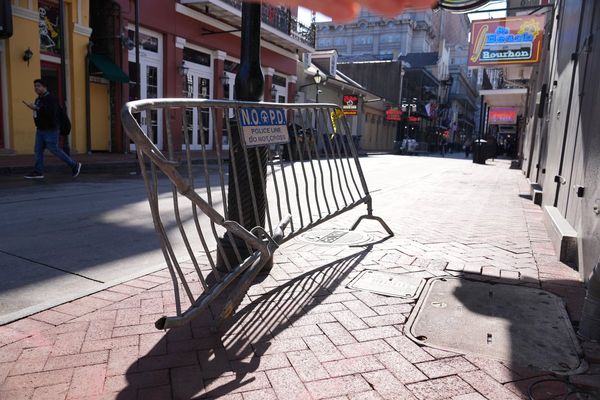
Fast Facts
- After three decades in the field, Dr. Coral Hoh designed an AI-powered solution for kids with language disorders: Dysolve.
- The program uses AI to custom-design accessible interventions meant to help kids overcome dyslexia.
- TheStreet sat down with Dr. Hoh to discuss the limitations in the field, and how AI helps families overcome them.
Even as artificial intelligence has been spotlighted in congressional hearings and courtrooms over ethical concerns that encompass inherent issues including privacy, security, bias, misinformation, inequality and copyright infringement, to name just a few, the technology does exist in other forms far less reminiscent of something like ChatGPT.
IBM, for instance, has partnered up with organizations around the world that are using its geospatial AI system to help accelerate reforestation campaigns, reduce flooding risk and generally enhance climate resiliency.
And linguist and cognitive scientist Dr. Coral Hoh, in a culmination of 30 years of fieldwork, is scaling dyslexia intervention and treatment through an AI-powered system called Dysolve.
Related: No, Elon Musk, AI self-awareness is not 'inevitable'
Dyslexia, according to Yale University, affects around 20% of the population. The language processing disorder causes difficulty in reading and writing.
Though there are early signs and clues that someone might have dyslexia, it is often misdiagnosed by both medical professionals and schools.
Though the condition doesn't technically have a cure, people with dyslexia can, through interventions, learn to overcome it.
But the evaluations required to diagnose someone with dyslexia are both time-consuming and expensive. And that expense comes before the therapy and interventions that are needed to help people overcome the condition.
"Many children and adults just don't get the help, even when they are still in school," Hoh told TheStreet, saying that a traditional evaluation with a specialist could cost between $2,000 and $10,000, depending on the number of sessions needed. "There's no solution for families."
"I wanted to find a solution."
Related: Human creativity persists in the era of generative AI
Why it's needed: Issues of scale and cost
Currently, Hoh explained that there is a disconnect within the industry between dyslexia diagnosis and intervention. Families need to shell out thousands of dollars for a lengthy evaluation with a specialist that may or may not result in a dyslexia diagnosis.
Such an evaluation could involve weeks of sessions, with the evaluator working to analyze the student's responses over time to try to figure out the likelihood that a student has dyslexia.
"It's a lot of very laborious work done very inefficiently," Hoh said.
If those sessions do result in a diagnosis, that diagnosis comes without a blueprint for evaluation or correction.
"You're paying for a label, really," Hoh said, adding that such a label just isn't necessary. The real patch for language processing disorders involves figuring out exactly where those processing issues are stemming from; more specifically, determining "in which part of the linguistic system in the brain" the processing failure is occurring.
More deep dives on AI:
- Deepfake porn: It's not just about Taylor Swift
- Cybersecurity expert says the next generation of identity theft is here: 'Identity hijacking'
- Deepfake program shows scary and destructive side of AI technology
That "dyslexia" label, she said, comes from psychologists and specialists, but the intervention that follows is largely undertaken by schools and teachers, not linguists.
"I'm a linguist. Language is an abstract object, a very complex system," Hoh said, adding that the study of what the brain does with language is not really a field yet. "And that's why I had to spend 30 years working with all sorts of populations to actually understand what is going on inside the brain when it comes to language and cognition."
The problem at hand here is two-fold: accessibility and scalability.
Fewer than half of students with dyslexia are getting the special help they need, Hoh said. Special education teachers work one-on-one, or in small groups, making it difficult to accommodate everybody.
It's a problem that Hoh said can only be solved with AI.
"You really need AI to solve big, intractable problems," she said. "Even if I were able to do it with one child, how could I do it for 13 million children in this country that have dyslexia? How do you scale it?"
Related: Microsoft engineer says company asked him to delete an alarming discovery
How it works
Dysolve, which is a fully automated program, builds unique reading games for the individual interacting with it, while that person is interacting with the system.
The program works to isolate the root causes of language processing failures in each person's brain. Then it tailor-makes customized games designed to help them work through that specific roadblock.
"From the user's responses, Dysolve AI has very critical information about how those brain processes ran or didn't run and at what level of efficiency, so we are very, very clear about what exactly is going on in somebody's brain in this area," Hoh said. The algorithm will "just keep going, making more games to either evaluate, diagnose or correct ... without pause."
The processes that Dysolve identifies occur during fractions of seconds; Hoh said that it's difficult for a human specialist, even in a one-on-one situation, to identify those differences and then calibrate therapy to those specific failures in processing.
The unique element of the program involves its custom, instant and endless game-building; the games are not built in advance, they are built during interactions with the student, based on those interactions. Each game is used only once, with every game serving as a completely fresh iteration.
"This is about people who thought their brain disorders were going to be lifelong, and it turns out to be that no, they may be born with a certain condition but that doesn't mean that we cannot go in and correct them." — Dr. Coral Hoh
This allows for the instantaneous accommodation of all the many individual variations of dyslexia and language disorders that might appear in a given population.
"We need very, very precise, very sensitive instruments. Dysolve AI won't budge no matter how much a child is struggling, and so it takes quite a lot of working through practices for them to nudge the scores up," Hoh said. "Then suddenly, the brain breaks through and a lot of the pathways clear."
Dysolve functions as a monthly subscription service; its basic tier costs $200 per month and its premium tier costs $350 per month. Both tiers include 24/7 access to the system in addition to free pre-screening and evaluation.
Related: Artificial Intelligence is a sustainability nightmare - but it doesn't have to be
Details of the model
Unlike ChatGPT, which is a Large Language Model, Dysolve is not a generic algorithm, Hoh said, adding that it "doesn't work with language. You've got to stitch every part carefully together because they're like different kinds of codes that you have to somehow stitch together. And that's why it took us a while to build this."
And where popularized AI companies have come under fire for building their models on content scraped from the internet, Hoh said that Dysolve can't and doesn't train on the internet because the kind of data she needs to train the algorithm isn't necessarily out there. And if it is, it's not reliable.
"We cannot trust the source, and we're looking for specific things so ... we have to do it ourselves," she said.
She added that hallucinations are not really a concern with Dysolve "because it is just so compartmentalized, so siloed."
Hoh confirmed that there are "all sorts of protections" in place within the system to safeguard students' data privacy.
Related: Tesla, prominent automakers are quietly mining your data
Early successes: A changing brain
Dysolve has published several case studies and trials in recent years that have noted significant improvements in kids who used the program.
Pilot programs between 2013 and 2019 found that Dysolve users advanced from scoring below 25% in efficiency tests to above 50% in a year and a half, notching "permanent gains."
Other ongoing trials have found higher score gains among Dysolve users compared to the control group.
“Participants’ state and school-administered trimester/quarterly reading assessment results are trending in a positive direction for Dysolve," the Center for Research in Education and Social Policy noted in preliminary trial results viewed by TheStreet. "The results are not statistically significant yet because we are still recruiting participants and have not hit our target sample size yet.”
Dysolve is designed to continue its program until each user reaches 90% to 100% efficiency levels.
You can read Dysolve's case studies and research here.
"This is a hopeful story. This is about people who thought their brain disorders were going to be lifelong, and it turns out to be that no, they may be born with a certain condition but that doesn't mean that we cannot go in and correct them," Hoh said.
"And it's not dyslexia alone, it will be all the others. We will keep looking at the other (neurological disorders). We want to solve it in our lifetime," she added. "Maybe it seems too fantastic to people that this can happen in our lifetime. But it is happening in our lifetime because technology is just amazing."
Contact Ian with tips and AI stories via email, ian.krietzberg@thearenagroup.net, or Signal 732-804-1223.
Related: To these US veterans, AI is a tool that could help prevent mass shootings







